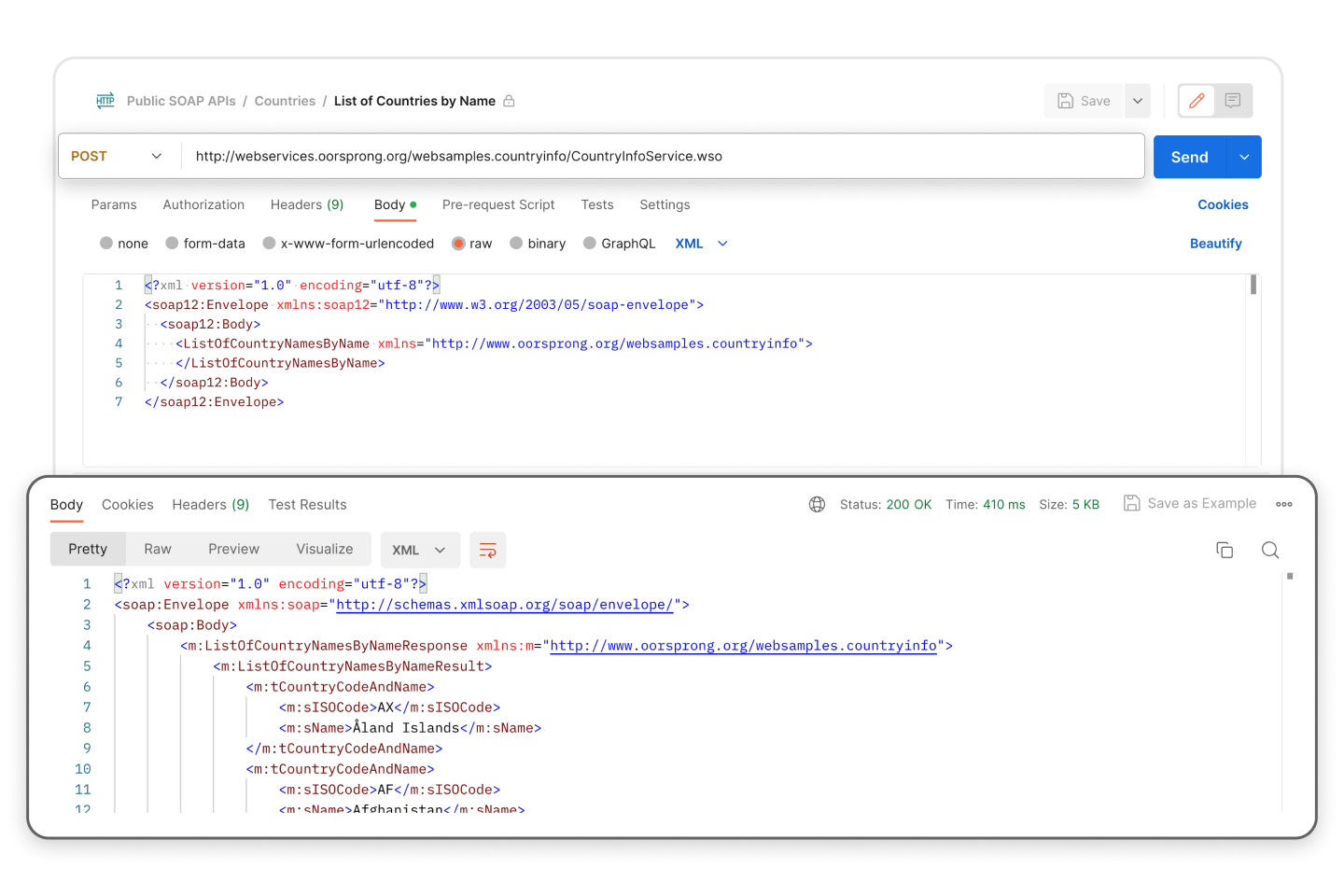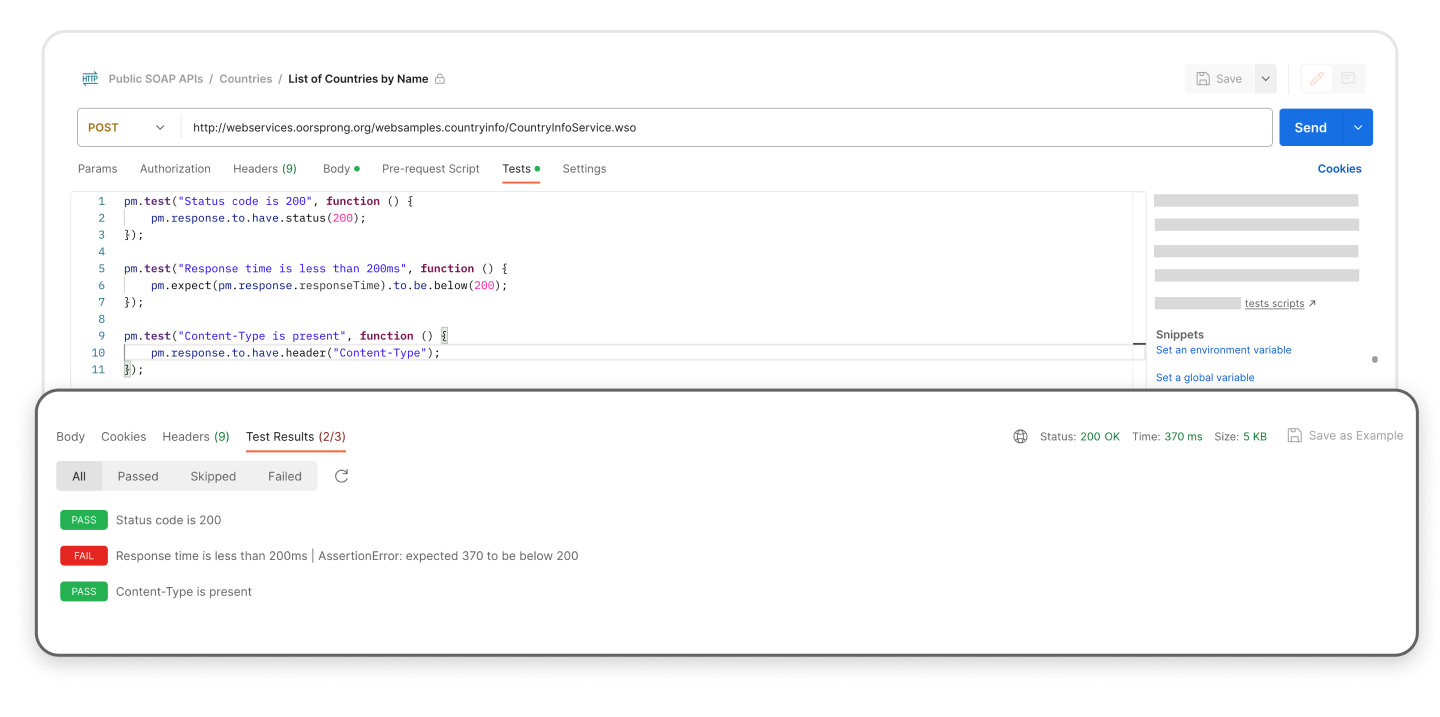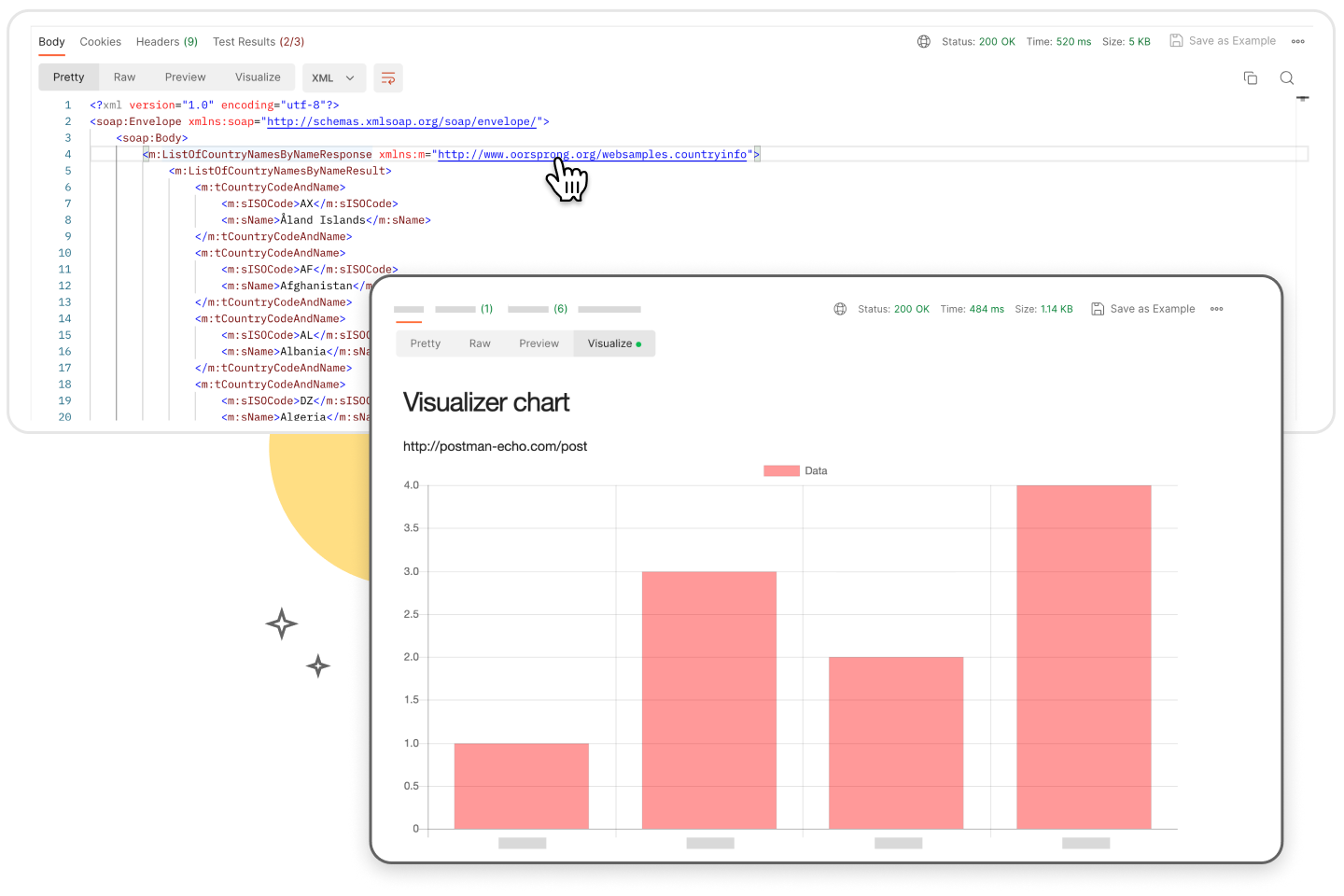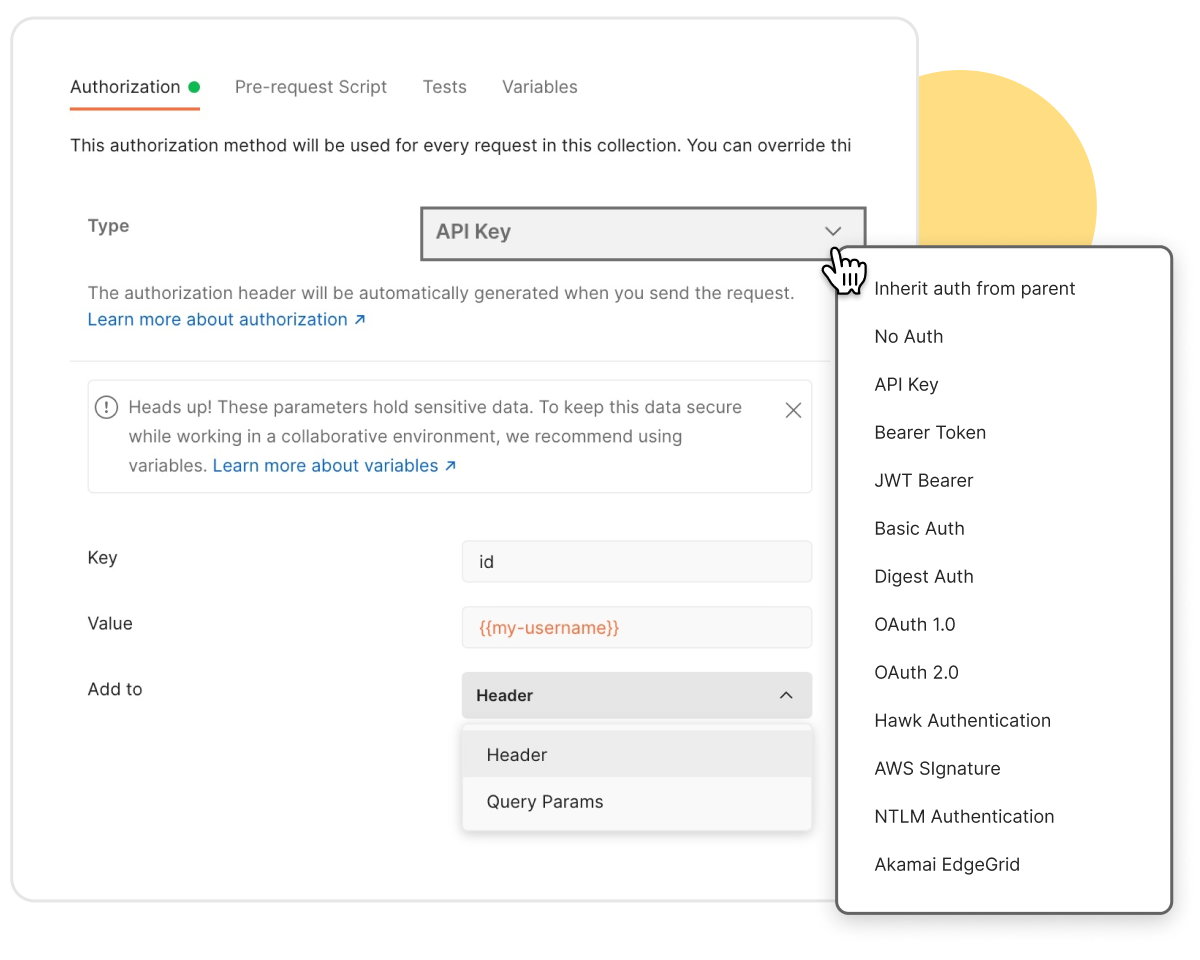SOAP client
What is a SOAP client?
SOAP (Simple Object Access Protocol) is a highly structured messaging protocol for exchanging structured data over the internet. It is based on XML and is used to facilitate communication between different applications and systems, especially in distributed environments with heightened security needs. A SOAP client removes some of the complexity of sending requests and parsing responses, which makes it easier for developers to explore, test, and debug SOAP APIs.
How does the Postman SOAP client work?
Postman's SOAP client is the industry standard tool for working with SOAP APIs. With the Postman SOAP client, you can:

Define, send, and save complex requests

Create a robust API test suite

Inspect and visualize responses

Manage authentication workflows
What can you do with a SOAP client?
Traditional approaches to calling a SOAP API require the API user to know a programming language, understand the API's protocol, and interpret the response. A SOAP client streamlines this process, enabling developers of all levels to explore, test, and debug SOAP APIs from an intuitive user interface. This makes it easier for teams to integrate public APIs into their applications—and allows them to easily spot and fix issues in their own API's code.
What other protocols does the Postman API client support?
Postman is more than just an API client—it's an API platform that simplifies each step of the API lifecycle and enables teams around the world to collaborate more efficiently. In addition to SOAP, the Postman API client also supports REST, GraphQL, WebSocket, and gRPC, so you can get started quickly with the protocol and architectural style that make sense for your project.
The Postman API client is tightly integrated with the rest of the platform, which allows you to leverage Postman's full feature set—including workspaces, API documentation, mock servers, and monitors—regardless of your API's stack. Postman also offers advanced features, such as role-based access control, API governance, and API security, for Professional and Enterprise teams.
Your AI strategy is only as strong as your APIs.
Postman helps teams collaboratively build APIs that power workflows and intelligent agents. With support for the Model Context Protocol (MCP), your APIs are integration ready. Learn how top teams avoid pitfalls and rescue APIs from chaos.